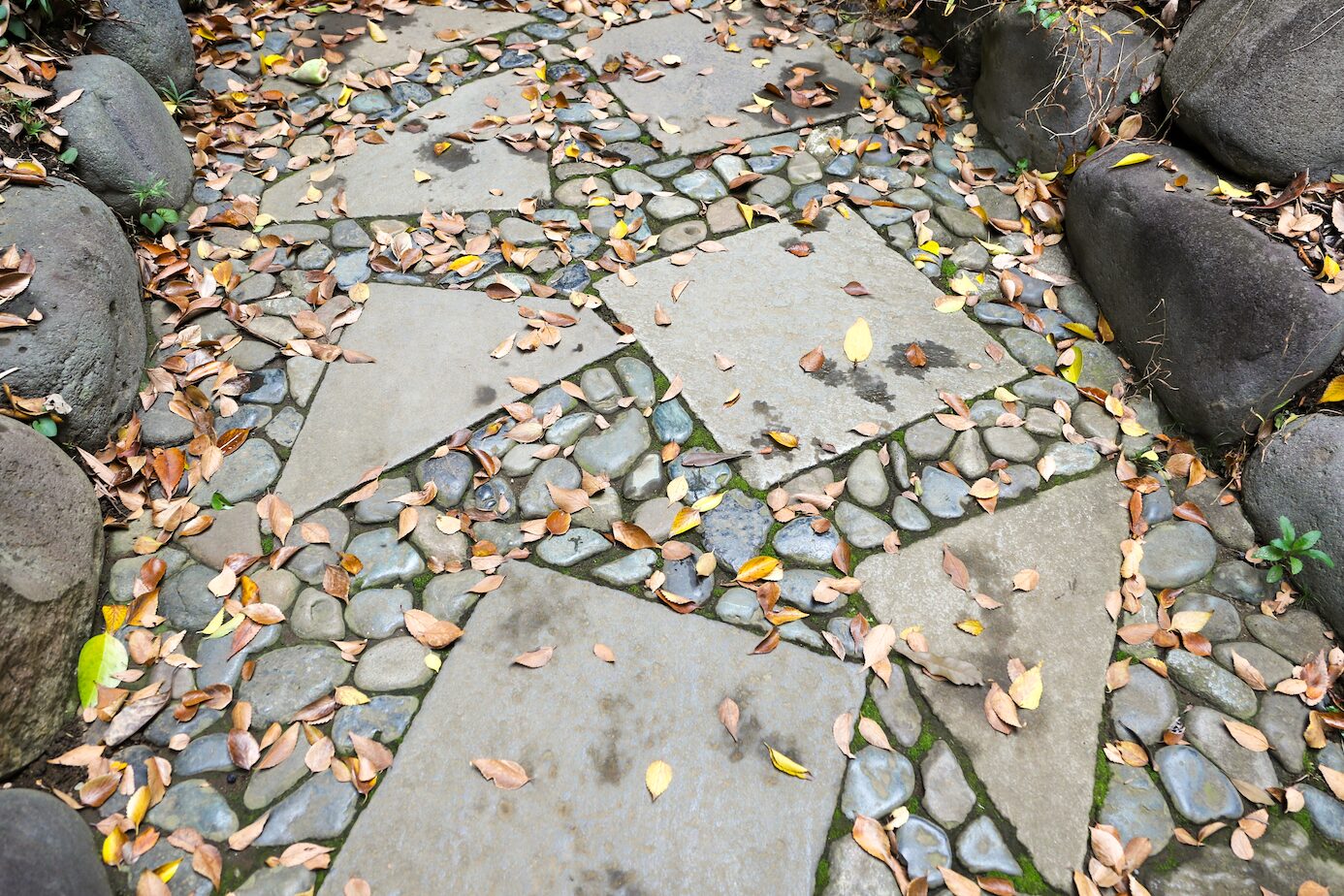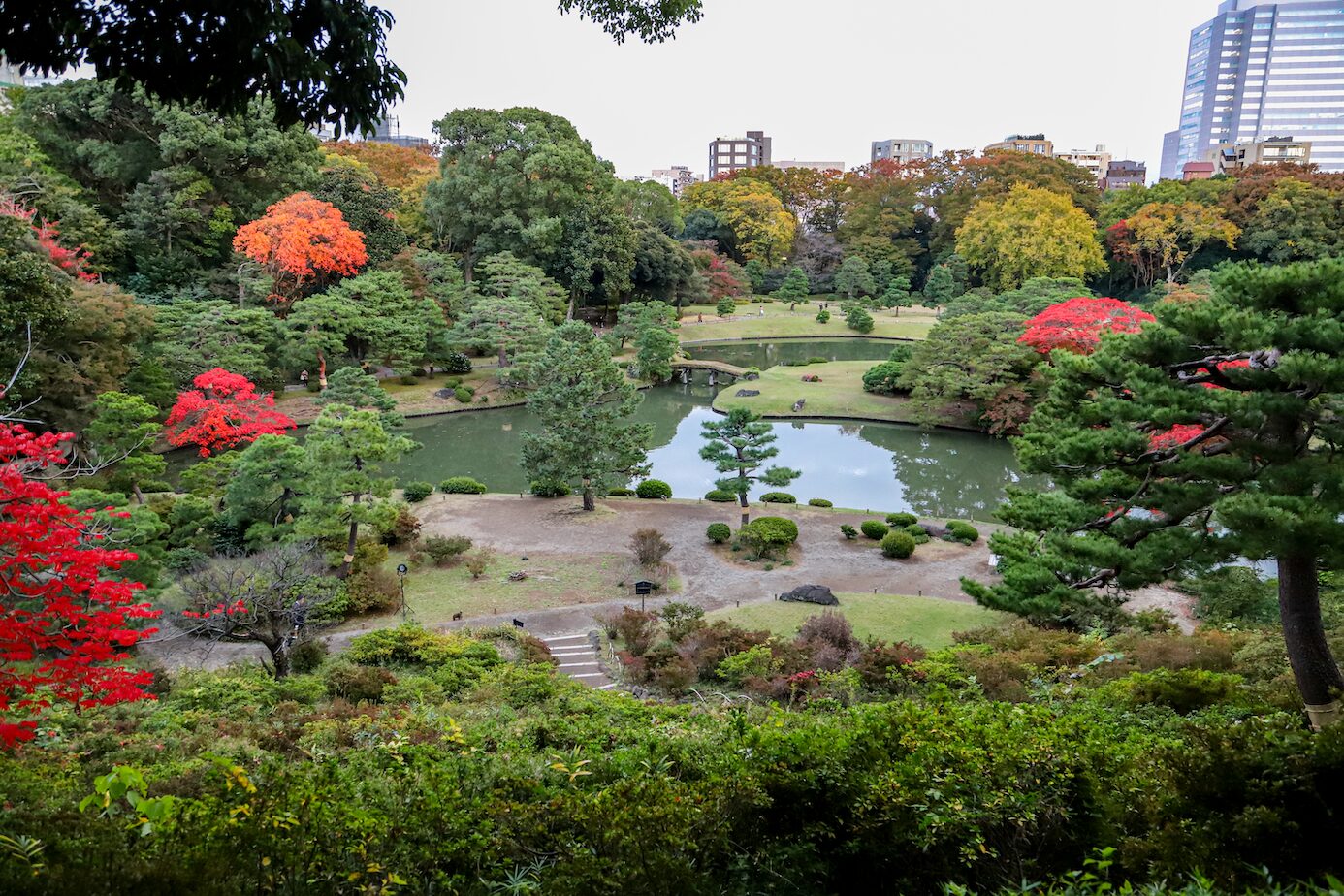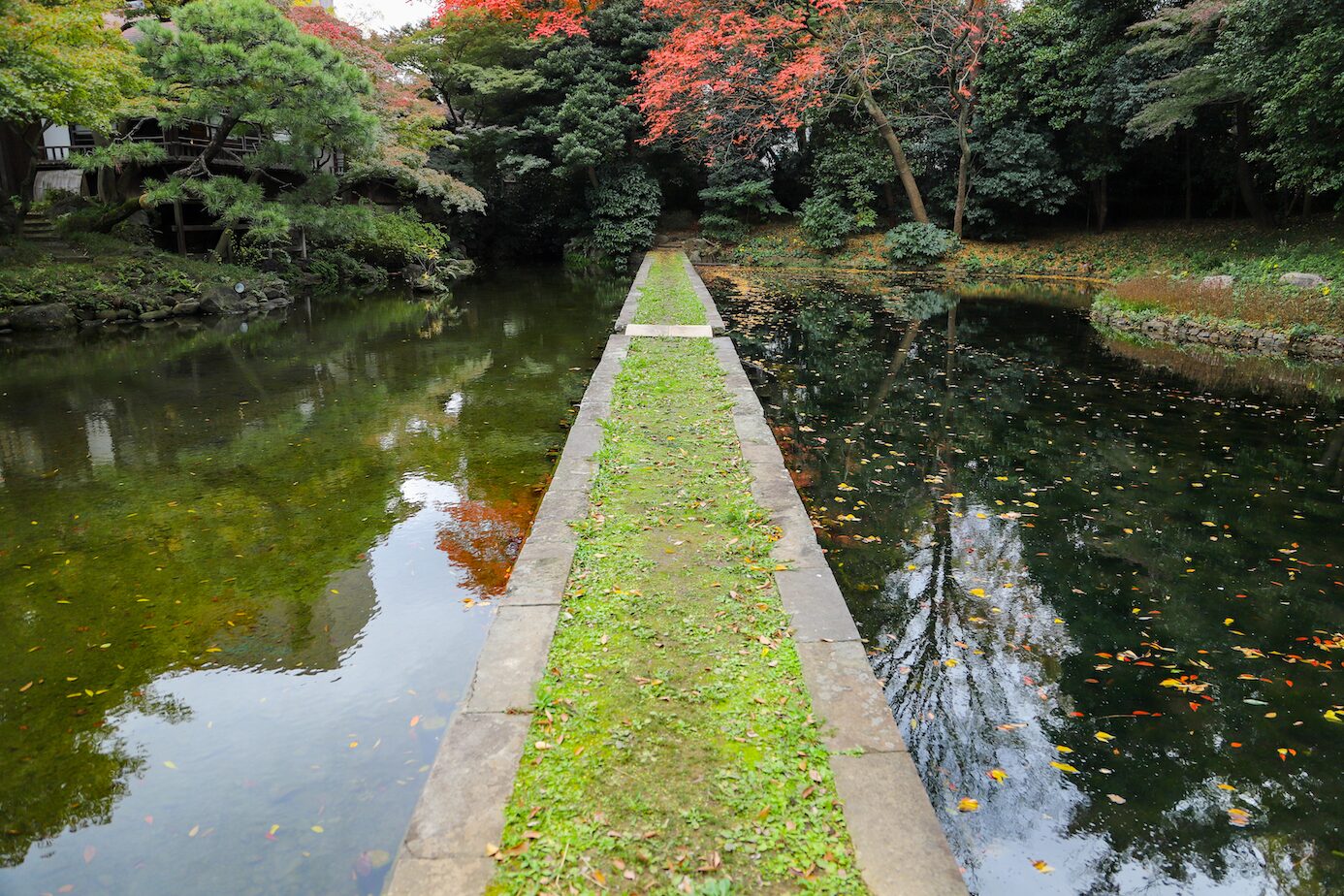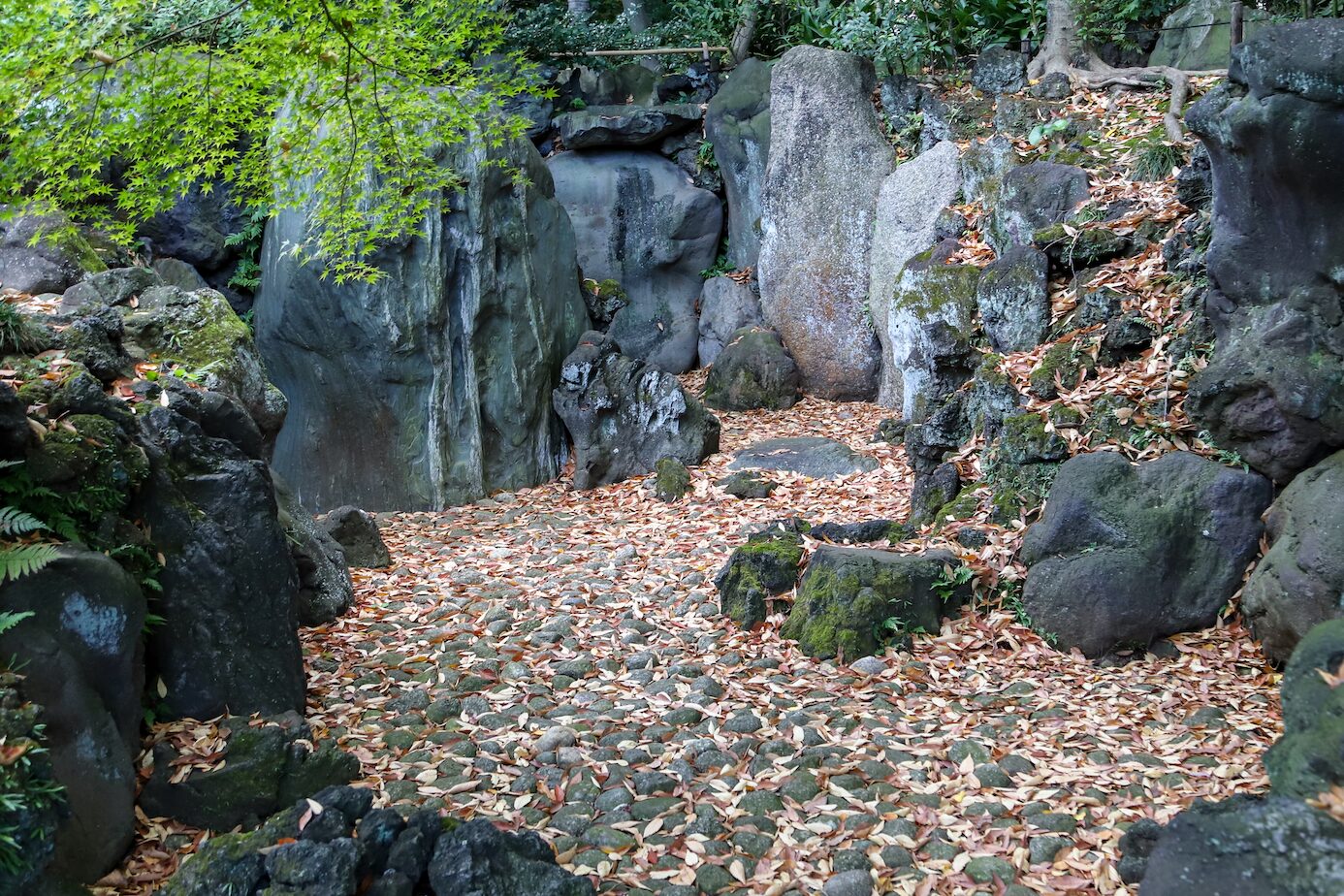Japan Tour Travelogue- Part I
In November 2024, 11 landscape professionals traveled to Japan with the North American Japanese Garden Association (NAJGA) to study landscape design, garden history, and Japanese culture. Throughout the five-day excursion, the group toured multiple gardens, experienced the culture of Japan first-hand, and made many professional and personal connections with people they met along the way. Whether riding the bullet train, eating sushi in the Tokyo Fish Market, or wandering along Pontocho Street in Kyoto, each experienced unique adventures that will continue to influence their lives, work, and world view. These are their stories.
Day 1: November 18 – Tokyo
Led by tour guides Dr. Makoto Suzuki, Professor Emeritus at Tokyo NODAI and Principal at Tokyo NODAI Green Academy, Emi Kitawaki, and Tatsuya Hosono from the Garden Society of Japan, our first day of the tour covered the Stroll Gardens of Tokyo, Koishikawa Korakuen, the Old Furukawa Garden, and finally Rikugien.

Koishikawa Korakuen Central Pond
The Stroll Gardens of Tokyo are designed with ponds and man-made hills, and you’re supposed to travel through them for the experience. The designers intend to entertain you, and they used specific design philosophies and techniques to influence and guide your experience in the garden. The observer should be aware of this and remain active in the experience, looking for indicators, like change. This means garden goers need to pay attention to the details of their surroundings. Did the pavement change, take you in a new direction, or was there a change in elevation? All of these are examples of “clues” that you need to look for something because the designer is showing you something. Remember, in a stroll garden, everything means something. Nothing was done just ‘to put some plants in’ or ‘fill in a space’.

Koishikawa Korakuen- Inner Garden
In our garden tour of Koishikawa Korakuen, we learned it was built by Yorifusa of the Togugawa Clan, the first Shogun of Japan. The garden had a heavy Chinese influence because its designer was a retainer of the Chinese Emperor.
The garden started with a private garden for the immediate family and had a series of islands that were connected by bridges that led to the gate for the main garden. The private garden was open and airy while the garden meant for guests was forested and enclosed. The gate had a small door and focused the view from the private garden into the next space. This garden had several locations along the way where the designer leads the viewer to pause and observe the intended view.
There were three distinct areas in the main garden, and each represents a province that one of the Shogun’s three sons ruled. The image of the lonely father wandering around his gardens while missing his children is the main emotion of this garden, which emulated the feeling of the bittersweet longing for an absent child.
There were several design specifics for this garden. Shapes were important: the circle represents heaven, the square represents the earth, and the triangle represents humankind. These shapes showed up in the pavement patterns throughout the garden and indicated to participants that they need to pay attention. At a fork in the road: going right will lead back to where you started (reality), and a left will lead you on further into the spiritual world.

The next garden, Old Furukawa Garden, was interesting because it illustrated the era when Japan was starting to open to the West following the Meiji Restoration. The estate had an English-style house, an English-style rose garden with clipped Boxwoods, and an expansive grass lawn. However, it also had a Japanese garden with a tea house that, according to the official pamphlet, “Is a superb garden which rivaled or surpassed its western-style counterpart.”
Notable features were the rose garden, the long carriage walk around the property, and the pond around which the Japanese garden was designed.
There was also a wonderful example of Karetaki, or the “dry waterfall technique”. It used stone instead of water to represent water falling in a deep mountain gorge. On the opposite shore of the pond is an actual waterfall that sat over 10 meters tall, so you could hear the water falling while looking at the dry waterfall.
Design techniques that stood out were the use of the path to direct views and objects to conceal views. The first part of the path was very much a tea garden and took you to the tea house. The rest of the garden was a stroll garden that curved back to the main residence, where the English garden and lawn were located.
The pond, special features, huge lanterns, and high-maintenance roses all indicated that this was a rich man’s garden.

Rikugien- View of the Horia-Jima Island

Stroll Garden of Tokyo- Dike Represents Lake in China.

Old Furukawa- Central Pond

Old Furukawa- Dry Waterfall

Old Furukawa- Tea House
Rikugien was the last garden of the day. It was a classic daimyo garden. Daimyo gardens were created by powerful feudal lords during the Edo period and were often large and grand to display wealth and status. Rikugien had artificial hills, a central pond and so much more. It was designed in 1702 for the Secretary of the 5th Shogun, and is known for its use of Wakanoura, which is a type of Chinese poetry that alludes to the scenic beauty of a natural Bay in Wakayama Prefecture in China. There are 88 locations to pause and read a line of poetry that alludes to a specific view in the bay, recreated in the garden. It was full of allusions and illusions.
There was a tea house in the garden but by this point in time, it was simply a feature in the larger stroll garden and no longer situated in a specifically designed tea garden, as we’ve come to know it.

TOM LUPFER
Founder & President - Lupfer Landscape Company
Tom Lupfer is the Founder and President of Lupfer Landscaping Company, former President of the Illinois Landscape Contractor Association (ILCA), and an esteemed member of the North American Japanese Garden Association (NAJGA).
